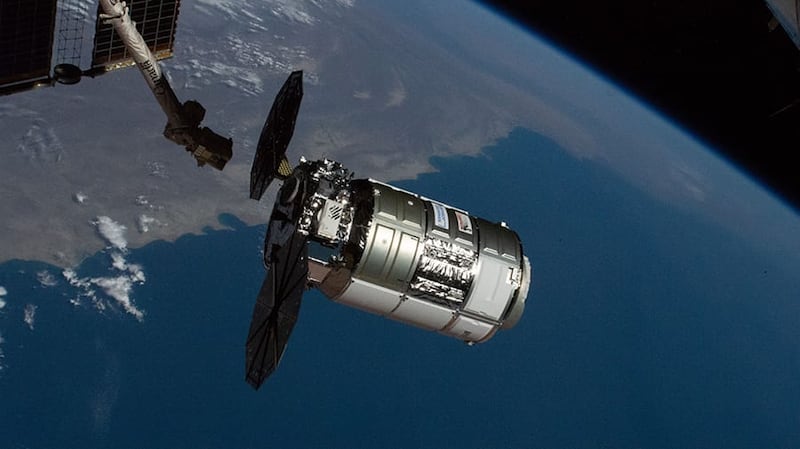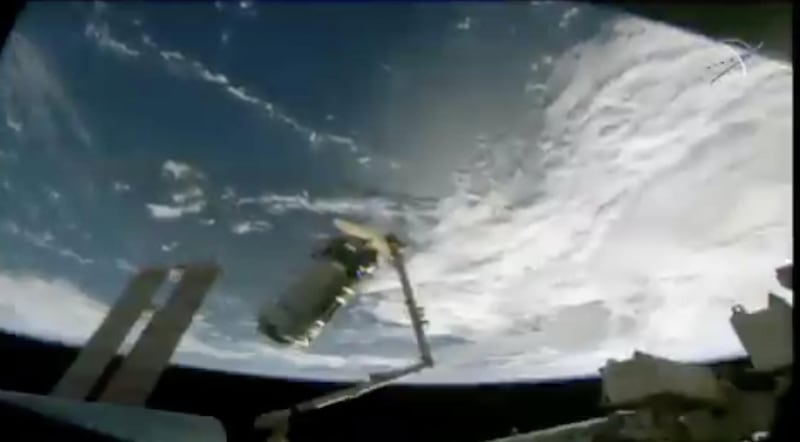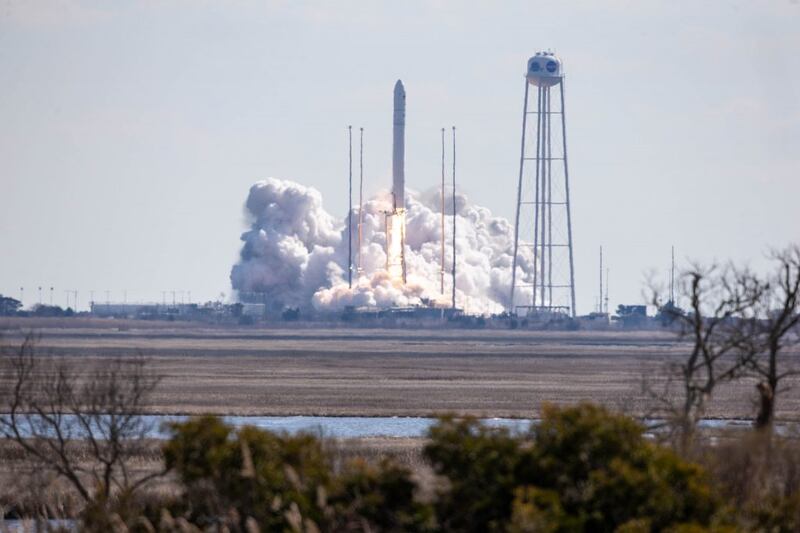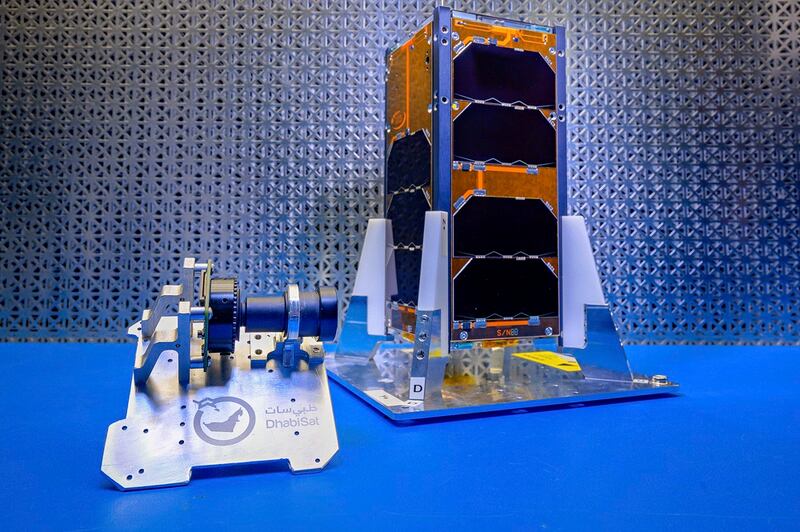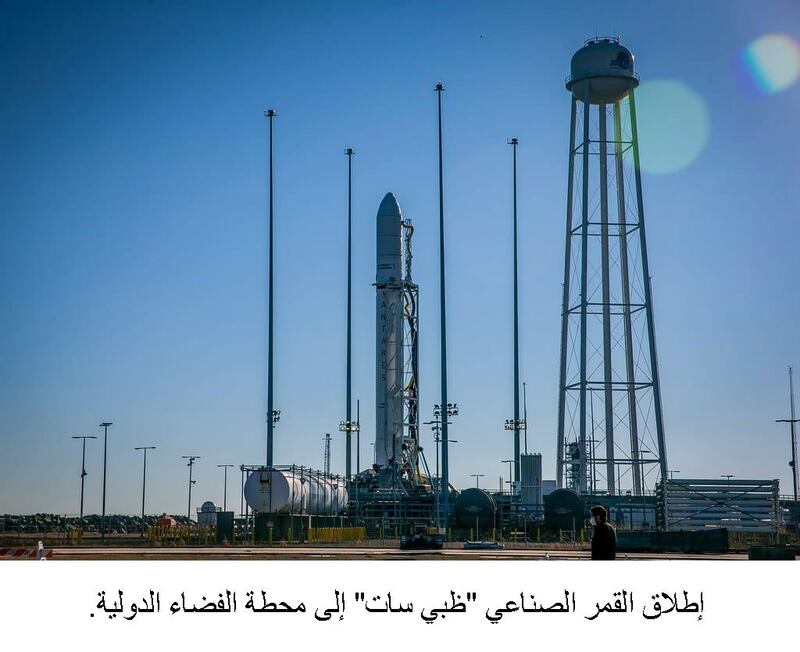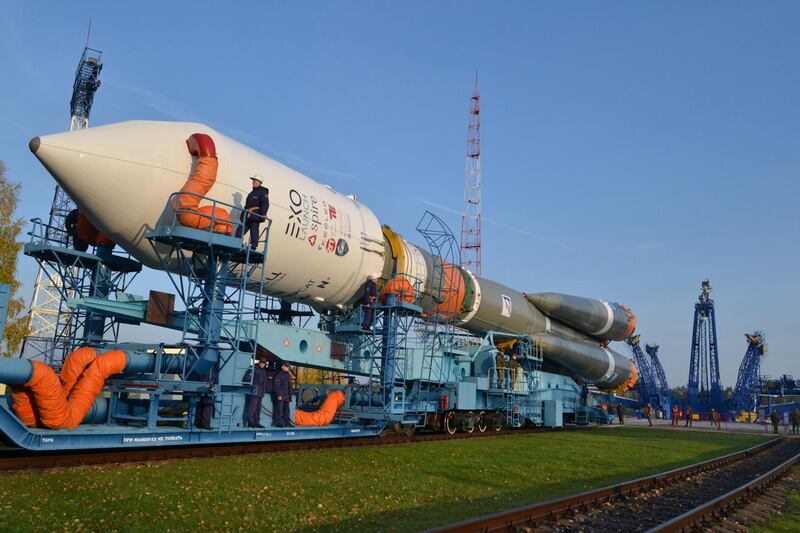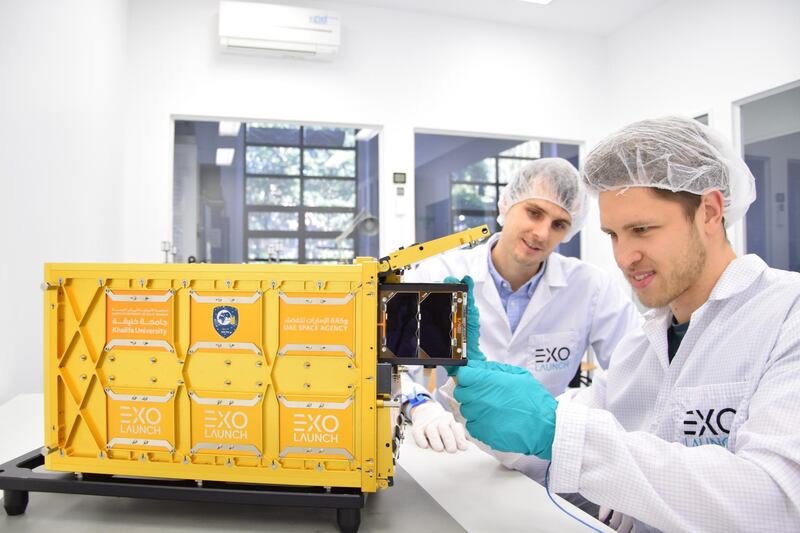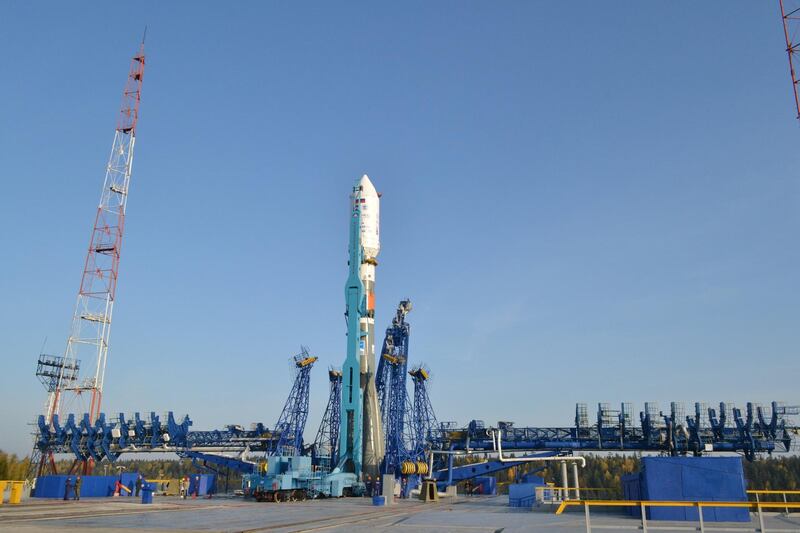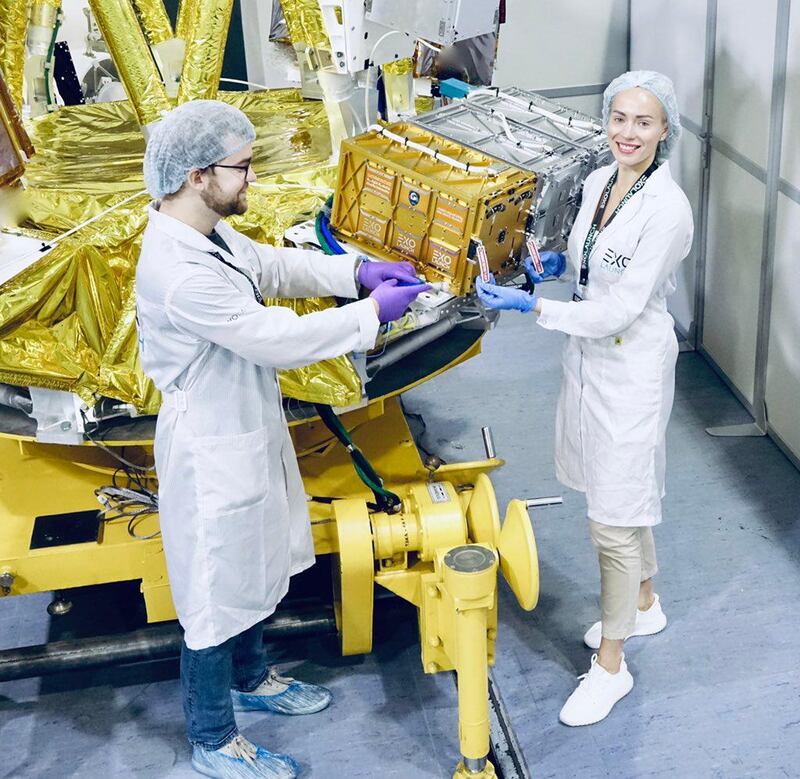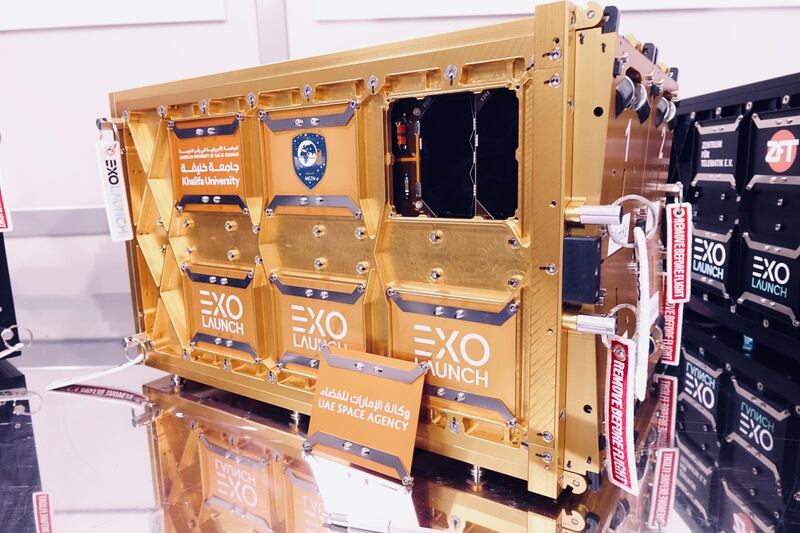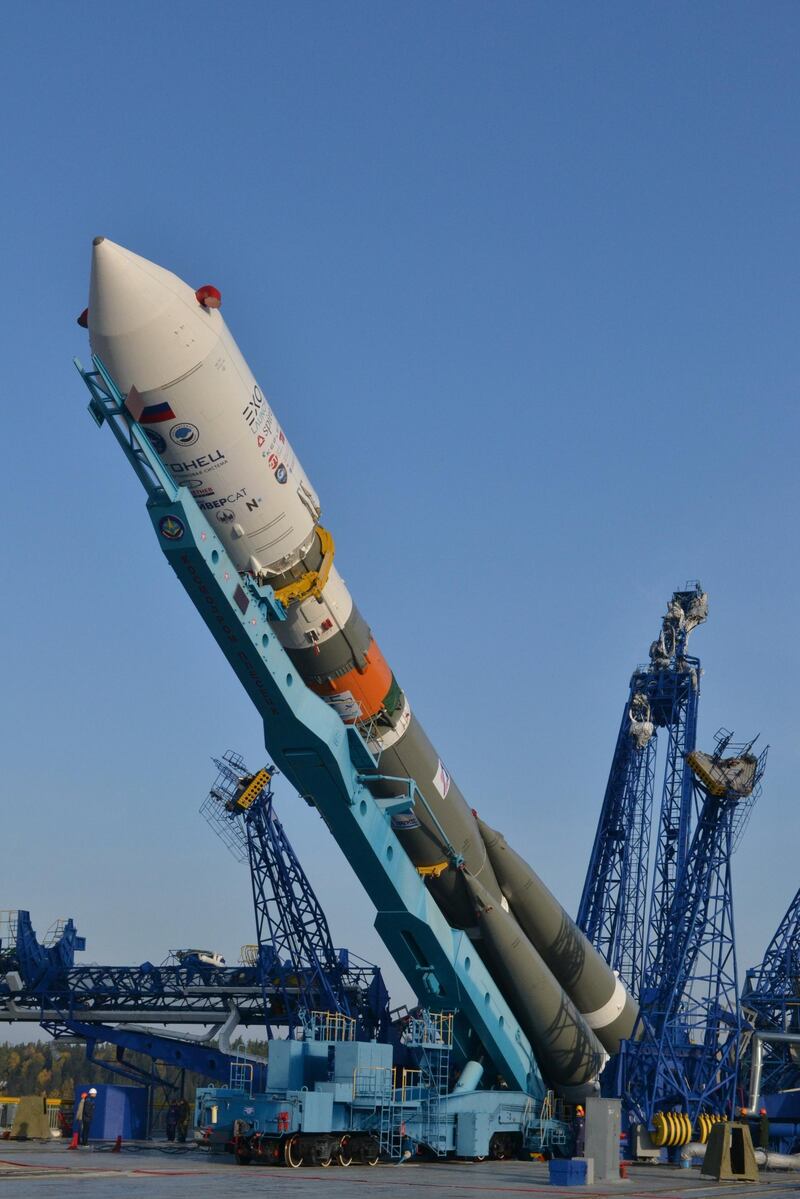A UAE-built miniature satellite that can point in specific directions to take high-resolution images has successfully reached its target orbit in space.
Students at Khalifa University built the advanced Cubesat, called DhabiSat, which was carried to the International Space Station on Cygnus resupply craft on February 20.
Cygnus, which was launched on an Antares rocket from the Wallops Flight Facility in Virginia, left the station on June 29, releasing DhabiSat and four other nanosats into their final orbit.
“With the deployment of DhabiSat into its orbital slot, our students and our partners have once again registered another key milestone for Khalifa University and the UAE,” said Dr Arif Sultan Al Hammadi, the university's executive vice-president.
“We thank our partners Yahsat and Northrop Grumman, who have supported our students throughout the process of designing, developing and launching DhabiSat, the third CubeSat built by Khalifa University students, as well as another CubeSat we are planning to build in the future.
“As the UAE begins to consolidate its status as a space power in the world, we look forward to creating more scientific talent and human capital, especially in the space science sector, along with our academic and industry partners.”
DhabiSat, formerly called MYSat-2, is an initiative by the university to help students design, build and test software modules for attitude determination and control systems, which enables satellites to point accurately at specific locations.
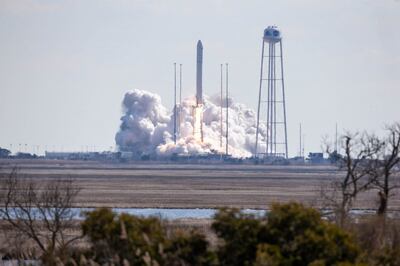
The CubeSat has been designed to use less power while targeting its digital camera. If successful, the algorithms used in this mission will help in developing more advanced CubeSats.
Muna Almheiri, YahSat’s chief human capital officer, said DhabiSat was a significant step in the UAE’s mission to develop home-grown talent in the space field.
“We need future generations of Emirati space leaders and visionaries to fulfil the aspirations of our founding fathers, and the rich potential of our nation,” she said.
“DhabiSat’s successful deployment underscores the aptitude, skills and maturity of our youth to manage multi-pronged programmes and work with the leading lights in the global space industry."
KhalifaSat launched its first nanosat, an Earth observation satellite called MYSat-1, built entirely by its students, into space in 2018.
A growing number of universities in the UAE have introduced the development of CubeSat into their educational programmes. They are versatile satellites that allow students to design, build and create software.
Last year, the MeznSat satellite, which can measure greenhouse gases over the UAE, was launched into space.
It was built by students at the Khalifa University and American University of Ras Al Khaimah, and funded by the UAE Space Agency.
Students use the YahSat Space Lab in Khalifa University to build these nanosatellites.
